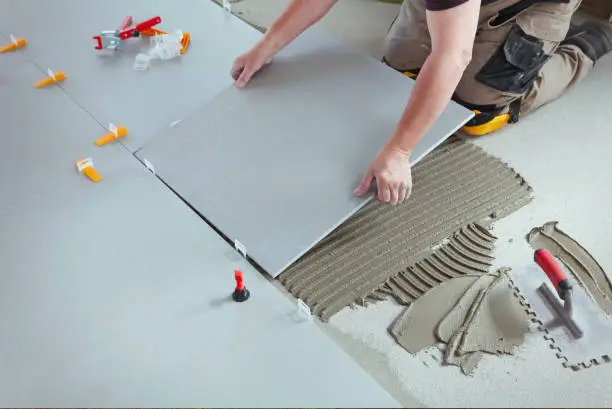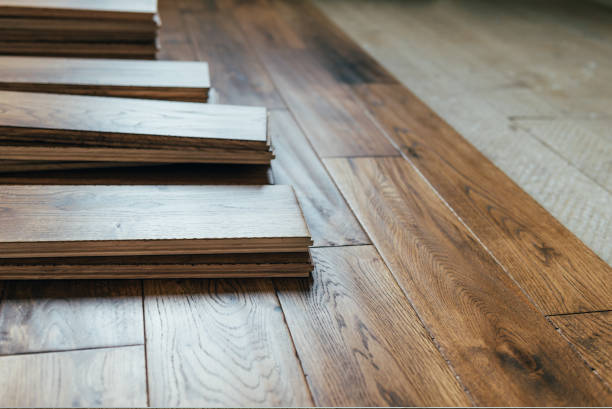Refresh your space with custom, unique and personal style.
Types of Flooring
-

Luxury Vinyl Planks
LVP (Luxury Vinyl Plank) flooring is a versatile and attractive flooring option that combines the aesthetic appeal of hardwood with the durability and resilience of vinyl. It starts with high-quality materials designed to replicate the look and feel of natural wood. The planks are constructed with multiple layers, including a wear layer for added protection against scratches and stains.
Installation of LVP is straightforward thanks to its click-lock design, allowing for a seamless experience whether you're a DIY enthusiast or hiring professionals. The flooring is resistant to moisture, making it suitable for a variety of spaces, including bathrooms and kitchens, where traditional hardwood might be susceptible to damage.
LVP flooring comes in a wide range of styles, colors, and textures, catering to different tastes and design needs. This flexibility means you can easily find a product that aligns with your aesthetic vision while maintaining practical functionality. Moreover, maintenance is simple, as regular sweeping and occasional mopping are often all that is needed to keep it looking its best.
Overall, LVP flooring provides an innovative solution for anyone looking to enhance their space with a beautiful, durable floor that stands the test of time.
-

Tile
Tile flooring is a popular choice for both residential and commercial spaces due to its durability and aesthetic appeal. The process of installing tile flooring typically begins with selecting the type of tile that suits the desired environment and design style. This selection can range from ceramic and porcelain to natural stone, each offering unique characteristics and benefits.
Preparation is crucial before installation. The subfloor must be clean, dry, and level to ensure a proper fit and prevent future issues like cracking. After the preparation, the tiles can be laid out in a pattern that complements the space. Many choose a grid pattern, while others might opt for diagonal or staggered layouts for a more dynamic look.
Adhesives and grouts are essential components in installing tile flooring. Thin-set mortar is commonly used to adhere the tiles to the subfloor, while grout fills the spaces between tiles, providing structural support and contributing to the overall appearance.
Once the tiles are installed, proper sealing is often necessary, especially for natural stone tiles, to protect against moisture and staining. Maintenance of tile flooring involves regular cleaning and occasional resealing, ensuring that the floor remains in good condition and continues to enhance the beauty of the space.
In summary, tile flooring offers versatility and durability, making it a favored choice for various applications. The process involves careful planning, skilled execution, and ongoing maintenance to keep the flooring looking its best.
-

Hardwood
Hardwood flooring is a versatile and durable choice for any space, offering both aesthetic appeal and practicality. It starts with selecting the right type of hardwood, each with its unique grain patterns, colors, and finishes. This choice contributes not only to the overall design but also to the feel of the room.
Installation can take various forms, including nail-down, glue-down, or floating methods, depending on the subfloor and desired outcome. Once installed, hardwood flooring provides warmth and sophistication, enhancing the ambiance of residential and commercial spaces alike.
Maintenance of hardwood floors involves regular cleaning to prevent dirt and debris build-up, along with periodic refinishing to restore their original luster. With proper care, hardwood flooring can endure for decades, making it a valuable investment.
The environmental impact is also an important consideration. Many hardwood products come from sustainable sources, ensuring that the beauty of natural wood can be enjoyed while supporting responsible forestry practices. Overall, hardwood flooring serves as a canvas for individuals to express their personal style in any environment.
-

Carpet
Carpet is a textile floor covering made from various materials, designed to add comfort, warmth, and aesthetic appeal to spaces. It consists of two primary components: the pile, which is the visible surface, and the backing, which provides support and stability.
Carpets can be manufactured from natural fibers such as wool, cotton, and jute, or synthetic materials like nylon, polyester, and polypropylene. Each type offers different characteristics in terms of durability, softness, and stain resistance.
Carpets are available in a wide range of colors, patterns, and textures, making them highly versatile for various interior design styles. They can be used in residential and commercial settings, contributing to sound insulation and thermal efficiency. Maintenance typically involves regular vacuuming and occasional deep cleaning to prolong the carpet’s life and appearance.
Overall, carpets serve both functional and decorative purposes, enhancing the ambiance of any environment.
